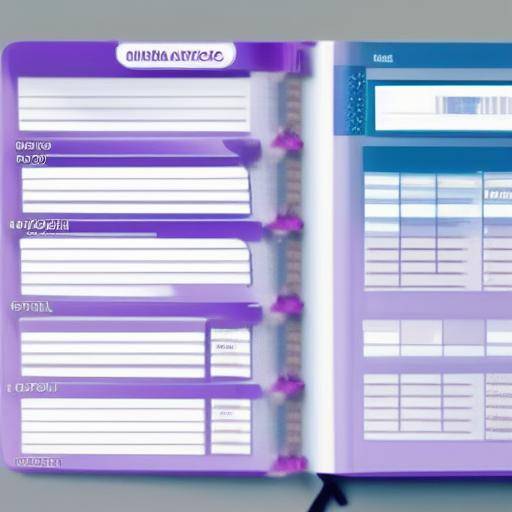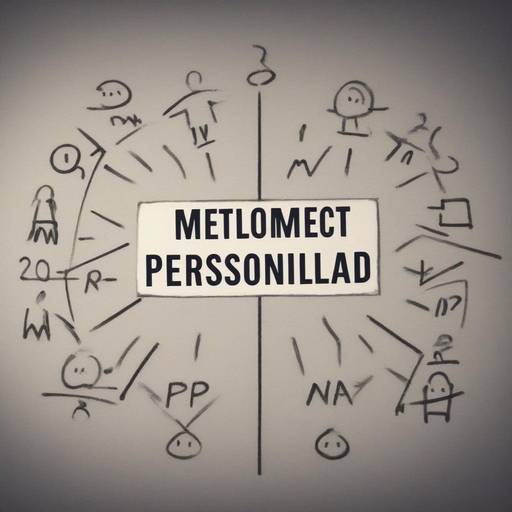
Life is full of habits, some positives that help us grow and evolve, and other negatives that limit and affect our well-being. On many occasions, eliminating these negative habits can be an overwhelming challenge. It is at this point where the technique of substitution becomes a powerful tool for personal development. In this article, we will explore in detail how to implement the substitution technique to eliminate negative habits, as well as their link to personal development. You will discover practical strategies, inspirational examples and expert advice that will guide you on this journey of personal transformation.
Introduction
Imagine waking up every morning with a sense of control over your actions and habits, knowing that you're moving towards a better version of yourself. The technique of substitution gives you that opportunity, allowing you to replace unwanted habits with positive behaviors that foster significant personal growth.
History and Background
To fully understand the technique of substitution and its impact on personal development, it is crucial to explore its historical origin and evolution over time. This technique had its roots in the first currents of behavioral psychology, where it was proposed that the modification of behaviors could generate significant changes in people's lives. Over the years, it has become a fundamental tool in positive psychology and personal development.
Replacement Technique: Origins and Evolution
The technique of substitution has its roots in the pioneering research of behavioral psychology, which focused on the modification of behavior patterns through the replacement of behaviors not desired by positive and healthy habits. The theory behind the technique is based on the idea that negative habits can be replaced by positive actions, which in turn leads to lasting change in behavior and mentality.
Key date: 1959 - Apparition of the book "Theory and Therapy of Counter-Pentencing Behavior", written by psychologist Joseph Wolpe, who formulated key principles of the technique of substitution.
The initial approach focused on specific disorders, but later expanded to address general habits and unwanted behaviors in everyday life. The concept of replacing negative habits with positive actions began to gain popularity as its effectiveness was demonstrated in various contexts.
Important Issues in the Evolution of the Replacement Technique
- 1970 - Integration in Cognitive-Conductual Therapy: The technique of substitution is merged with cognitive-behavioral therapy, extending its application to anxiety, depression and addiction disorders.
- 1990 - Incorporation in Personal Development: The technique acquires relevance in the field of personal development, being used to promote positive changes in everyday life.
The basic concept of the replacement technique has remained constant over the years, but its application has diversified and refined to adapt to a wide range of situations and challenges.
Detailed Analysis
The impact of the substitution technique on the elimination of negative habits and their role in personal development is of paramount importance. Let us examine in depth the benefits, challenges, current trends and concrete examples to fully understand their scope and application.
Benefits of Restitution Technique
- Promoting Self-Control and Self-Discipline: By incorporating positive habits instead of negative ones, the ability to control and direct personal behavior is strengthened proactively.
- Creation of New Neuronal Ways: By replacing negative habits with positive actions, the creation of new neural pathways that support a lasting change in behavior is encouraged.
- Improvement of emotional and mental well-being: Successful implementation of the substitution technique can lead to significant improvement in emotional and mental health, reducing anxiety, stress and depression.
- Building Resilience: By actively confronting and overcoming negative habits, emotional resilience and capacity to face future challenges are strengthened.
Challenges of Restitution Technique
- Resistance to Change: Overcoming internal resistance to the change of ingrained habits can pose an important challenge in the implementation of the replacement technique.
- Persistence and consistency: Maintaining a consistent and persistent approach to the adoption of new habits may require continuous effort and determination.
- Identification of Subyacent Habits: Identifying and addressing the underlying habits that drive unwanted behaviors is critical to achieving sustainable change.
Current Trends and Case Studies
Currently, the application of the personal development substitution technique has gained wide recognition and has been supported by numerous studies and success stories. These studies provide a detailed analysis of their application in areas such as stress management, mental health and labor productivity, supporting their effectiveness and relevance in everyday life.
Comprehensive review
To further explore the practical application of the substitution technique, it is essential to analyse its applications, case studies and best practices. In addition, a detailed review of the views of experts and future perspectives will be required to provide a complete and updated view of their relevance to personal development.
Practices and Case Studies
The technique of substitution has been successfully applied in numerous scenarios, from professional environments to personal life. Illustrative case studies offer a concrete view of their implementation and impact, highlighting how it has led to significant change in people's behavior and well-being.
Opinions of Experts and Future Perspectives
The vision of experts in the field of personal development provides a deeper understanding of how the technique of substitution can continue to evolve and play a crucial role in the future of individual and collective well-being. Future perspectives explore the potential of the technique to address emerging challenges and promote positive change in society.
Comparative analysis
A comparative analysis between substitution technique, negative habits and personal development offers a holistic view of their interrelationship, identifying similarities, differences and possible synergies between key concepts.
Parallelisms between Restitution Technique and Negative Habits
Despite its fundamental differences, the substitution technique and negative habits share an intrinsic link, as the objective of the technique is to replace precisely those unwanted habits that are presented as obstacles to personal development.
Synergy with Personal Development
By integrating the technique of substitution with personal development, there is a significant synergy that drives personal evolution and internal growth. The deliberate application of this technique can catalyze the overall process of growth and self-realization.
Practical Tips and Accessible Recommendations
For those who wish to implement the substitution technique in their quest to eliminate negative habits, a number of practical advice and actionable recommendations can serve as an effective guide to address this challenge, promoting a positive and lasting change in their daily lives.
Tips for Implementing Replacement Technique:
- Identification of Habits to Replace: Clearly identifying the negative habits to be replaced is the first crucial step.
- Establishment of Alternative Positive Habits: Identify and establish positive habits that can effectively replace unwanted ones.
- Consistency and Persistence: Maintaining coherence and persistence in the application of the technique is essential for achieving lasting results.
- Redefinition of the Daily Routine: Incorporating positive habits in the daily routine can strengthen your grip and promote deep change.
Accessible Recommendations for Sustained Personal Development:
- Practice of Mindfulness and Self-observation: The practice of full care and self-observation allows greater awareness of personal habits and behaviors.
- Support for Mental Health Professionals: In cases where negative habits have a significant impact on mental health, it is essential to seek guidance from mental health professionals.
- Community and Social Support: Finding support from friends, family or related communities can be invaluable in changing habits.
- Celebration of the Achievements and Progresses: Recognizing and celebrating progress and achievements throughout the process strengthens motivation and confidence in personal capacity for change.
Perceptions of Industry and Expert Reviews
In order to gain an enriching view of the role of the replacement technique at present and in the future, it is essential to consider the perceptions of industry and the views of experts in the field of personal development.
Impact on the Personal Development Industry
The replacement technique has left a significant footprint in the personal development industry by offering a practical and effective approach to addressing negative habits and promoting positive change. Its relevance as a transformative tool has been recognized and adopted by various professionals and personal development resources.
Opinions of Experts and Future Perspectives
The views of experts in psychology, personal coaching and mental well-being provide a valuable insight into the technique of substitution and its role in the evolution of personal development. Future perspectives reveal the continuing potential of this technique to positively impact people's lives and address emerging challenges in the field of well-being and personal transformation.
Cases and Applications in Real Life
Exploring practical cases and specific applications of real-life replacement technique offers a direct understanding of their effectiveness and scope in diverse environments, enriching knowledge about their implementation and results.
Examples of Successful Applications
- Case 1: Management of Stress in the Labor Environment: The application of the substitution technique to replace negative thinking patterns with positive approaches has proven to significantly reduce stress levels among employees.
- Case 2: Addictive Habits Abandonment: The substitution technique has been successfully used in addiction rehabilitation programmes, where the replacement of addictive behaviors by healthy habits has been critical to the sustained recovery of individuals.
Future Trends and Predictions
Looking forward, it is important to identify emerging trends and to anticipate the potential impact of the substitution technique in the context of personal development. This provides a prospective view on how this technique will continue to shape and transform people's lives in the coming years.
Continuous evolution and adaptation
The technique of substitution is constantly evolving to adapt to the changing needs of society and the demands of personal development. The integration of technology and research into neuroscience promises to open new possibilities for its future application.
Innovative Development Predictions
The application of the substitution technique could be extended to areas such as digital health, artificial intelligence and neurotechnology, offering more and more personalized and effective approaches for changing habits and improving personal well-being.
Conclusions and FAQs
Conclusions
The technique of substitution represents an invaluable tool on the road to the elimination of negative habits and personal development. Its positive impact on people's lives, supported by studies, case studies and expert opinions, places it as a fundamental resource for promoting transformative change.
Throughout this article, we have explored in depth the foundations, practical application and future potential of the technique of substitution, providing an integral vision of its relevance in the field of personal development.
Frequently asked questions
1. What is the difference between the technique of substitution and the simple suppression of a habit?
The difference is that the technique of substitution not only seeks to eliminate a negative habit, but to replace it with a positive one, thus creating a lasting change in behavior.
2. What role does self-consciousness play in the effective implementation of the substitution technique?
Self-consciousness is fundamental, as it allows to identify negative patterns and habits, as well as to evaluate the effectiveness of the new positive habits being incorporated.
3. What is the role of consistency in the technique of substitution?
Consistency is essential for effective replacement technique, as it requires continuous practice and persistence in the adoption of new habits.
4. Can the substitution technique be applied to multiple negative habits simultaneously?
While it is possible, simultaneous application to multiple habits may require greater planning and focus to ensure effective and sustainable results.
5. What is the role of social support in the successful implementation of the substitution technique?
Social support can provide motivation, responsibility and guidance during the habit change process, increasing the likelihood of success.
6. Is professional assistance required to implement the substitution technique in the elimination of negative habits?
In cases where negative habits have a significant impact on mental or physical health, it is advisable to seek professional guidance and advice to effectively address changing habits.
Conclusion
The technique of substitution represents a powerful and effective tool in the elimination of negative habits and the promotion of personal development. By understanding their foundations, benefits and practical applications, individuals can enhance their ability to overcome obstacles and promote positive change in their lives. The combination of consciousness, commitment and a solid understanding of the substitution technique can generate a significant impact on personal well-being and continuous growth.
By applying the principles of this technique, individuals can visualize a path to a healthier, balanced and meaningful life, freeing themselves from the negative habits that limit their development and embracing behaviors that cultivate a positive and strengthening mentality.
With the growing awareness and application of the technique of substitution, a future is seen where more individuals find the power to transform their lives significantly, promoting a healthier and more balanced society as a whole.






















































